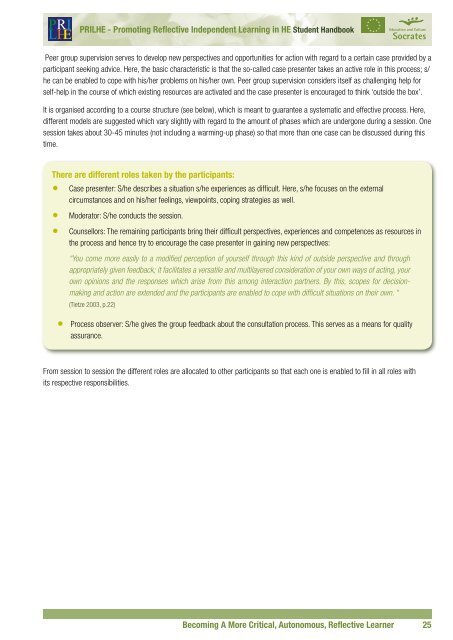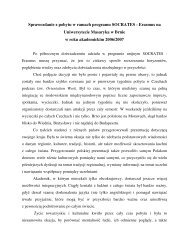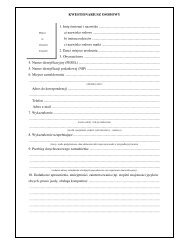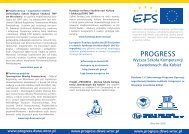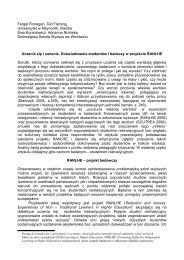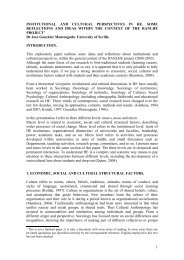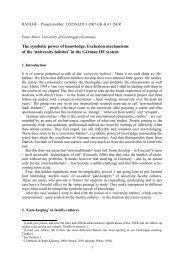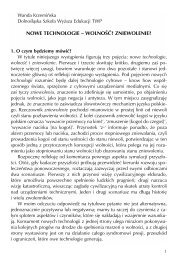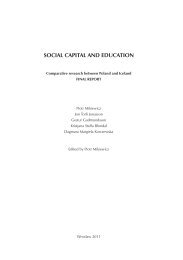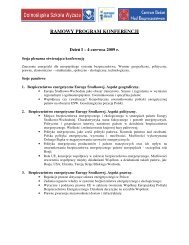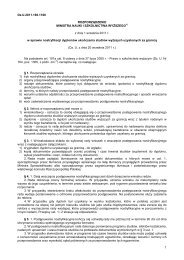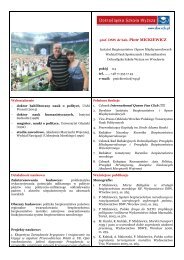PRILHE - Promoting <strong>Reflective</strong> Independent Learning in HE Student HandbookInteractive groupsIn Spain there is a pedagogical activity based on group work that has been developed in some secondary, primary and adulteducation schools. This activity is called Interactive groups. The interactive groups are mixed groups of 4 or 5 students that areformed by giving emphasis to different gender, cultures and learning levels. Each group works in an activity for 20 minutes,mentored by a person of the educational community (volunteer, neighbour, family member, etc.). This person is in charge ofassuring that students follow the activity with the help of their peers and promoting the interactions between them. (Elboj et al.2002).“The way the lecturer conducted his classes forced me almost to get out of my hiding. Exactly till the moment ofstarting the studies I had been a very shy and quiet person, who couldn’t express her own opinion. Thanks to theexercises which we do in groups and the discussions we had, now I can say aloud what I think, I don’t care what othersthink about me, I do what, according to me, is good for me and if someone appreciates my actions I have extrasatisfaction that I do mean something in other people’s lives.”(Student, Poland)The interactive groups achieve two goals. The first one is related to being and learning together, because students of differentcultures, gender and academic levels learn to help each other, and this is a way to promote solidarity and open dialogue. Thesecond one is related to instrumental skills because thanks to interactive groups the learning process is to improve or strengthenlearning and students acquire more knowledge.“But otherwise – we have less – moments of discussions or special lectures to work reflexively about this. Mrs K. offersthis course about writing and speaking. In principle this is a reflexive course. Indeed, it is specific, but it helps us torealise that there are different modalities of speaking, and you can practice them, especially for your own subject, andthat there are different modalities of writing. She holds this course for the second time and I think it’s well accepted.Sometimes students tell me they would like to have such a course more often because firstly it is fun, and secondly itgives you the feeling of: how to evaluate your competence? How to advance?”(Lecturer, Germany)Attending classes is a very important issue for success. It is like a ritual:“It is more dynamic. We arrive here already tired after a long working day. If I don’t participate, after a while I do notpay attention any more. I am almost asleep. If I participate it is different. I am more attentive and memorise better. Iremember a class where the teacher asked us questions and it is us [the students] who defined concepts followingthe questions asked. She asks a lot of questions. Intrinsically, we know the topic (…). With the questions, the teacherhelps us to conceptualise the topic and at the end she puts the names to what we try to express”(Student, Portugal)Peer group supervisionTo give a quick example how a co-operative reflection/learning process could be organised, a method of peer group supervision isbriefly presented below:The starting point for the common work within this counselling setting are concrete experiences and problems the participants areconcerned with and worrying about in their professional/study life. These are discussed systematically in a group composed of 5 toa maximum 10 persons who, in terms of professional and lifeworld issues, are relatively close to each other (they don’t have to beliterally colleagues) so that a similar experiential background exists. The participants advice each other mutually and autonomously,i.e. they work without help from a professional supervisor. Thus, all persons involved are equally responsible for the reflecting andlearning process.24<strong>Becoming</strong> A <strong>More</strong> <strong>Critical</strong>, <strong>Autonomous</strong>, <strong>Reflective</strong> <strong>Learner</strong>
PRILHE - Promoting <strong>Reflective</strong> Independent Learning in HE Student HandbookPeer group supervision serves to develop new perspectives and opportunities for action with regard to a certain case provided by aparticipant seeking advice. Here, the basic characteristic is that the so-called case presenter takes an active role in this process; s/he can be enabled to cope with his/her problems on his/her own. Peer group supervision considers itself as challenging help forself-help in the course of which existing resources are activated and the case presenter is encouraged to think ‘outside the box’.It is organised according to a course structure (see below), which is meant to guarantee a systematic and effective process. Here,different models are suggested which vary slightly with regard to the amount of phases which are undergone during a session. Onesession takes about 30-45 minutes (not including a warming-up phase) so that more than one case can be discussed during thistime.There are different roles taken by the participants:•Case presenter: S/he describes a situation s/he experiences as difficult. Here, s/he focuses on the externalcircumstances and on his/her feelings, viewpoints, coping strategies as well.• Moderator: S/he conducts the session.•Counsellors: The remaining participants bring their difficult perspectives, experiences and competences as resources inthe process and hence try to encourage the case presenter in gaining new perspectives:“You come more easily to a modified perception of yourself through this kind of outside perspective and throughappropriately given feedback; it facilitates a versatile and multilayered consideration of your own ways of acting, yourown opinions and the responses which arise from this among interaction partners. By this, scopes for decisionmakingand action are extended and the participants are enabled to cope with difficult situations on their own. “(Tietze 2003, p.22)• Process observer: S/he gives the group feedback about the consultation process. This serves as a means for qualityassurance.From session to session the different roles are allocated to other participants so that each one is enabled to fill in all roles withits respective responsibilities.<strong>Becoming</strong> A <strong>More</strong> <strong>Critical</strong>, <strong>Autonomous</strong>, <strong>Reflective</strong> <strong>Learner</strong> 25


